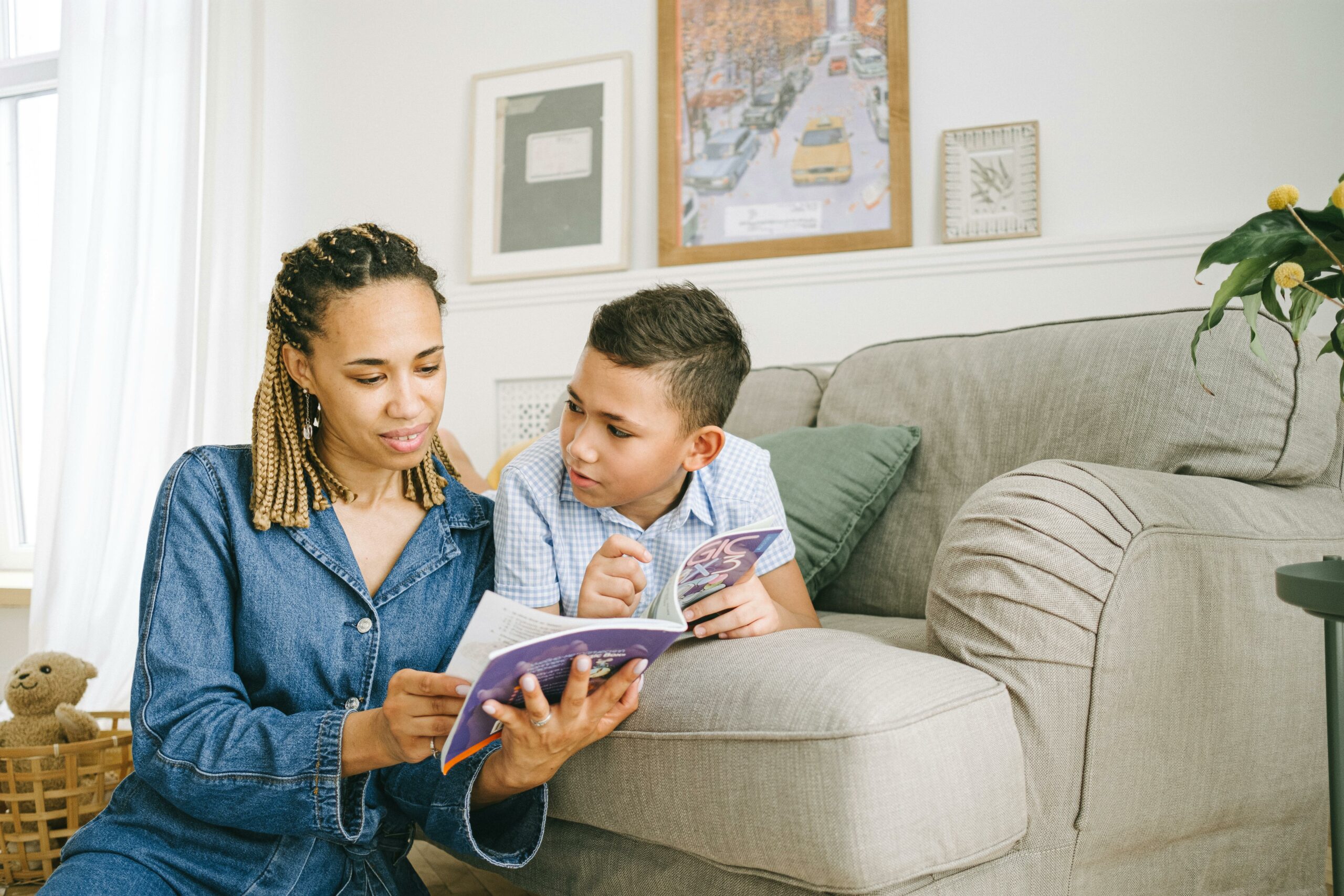
When faced with the daunting task of navigating a tough talk with a child, the initial instinct for many parents is to either delay or completely avoid the conversation. Yet, this avoidance, while seemingly a temporary relief, often creates a more complicated situation in the long run. The truth is, children are remarkably perceptive, and they can sense when something is wrong, even if they don’t have the words to express it. A lack of open communication can lead to confusion, anxiety, and a feeling of being left out, which can be far more damaging than the discomfort of the conversation itself. The goal isn’t to be a perfect orator but to be a present, honest, and reassuring guide. It’s about building a foundation of trust where a child feels safe to ask questions, even the ones that seem impossible to answer.
The goal isn’t to be a perfect orator but to be a present, honest, and reassuring guide.
Before you even begin to speak, the most crucial step is to prepare yourself. This isn’t just about figuring out what you’ll say; it’s about managing your own emotions. Children can easily pick up on a parent’s stress, sadness, or anger, and these emotions can overshadow the message you’re trying to convey. Take a moment to breathe, to ground yourself, and to get your own thoughts in order. Consider the child’s age and developmental stage. What is their capacity to understand the topic? A conversation about a family illness with a five-year-old will be vastly different from one with a teenager. Tailor your language, your metaphors, and your level of detail to what they can realistically process. Don’t underestimate their intelligence, but don’t overload them with information they’re not ready for. You’re not trying to give them a complete medical or legal dissertation; you’re providing them with just enough information to understand their world and feel secure in it. This preparation also involves anticipating their potential questions. They might ask things you don’t know the answer to, and it’s perfectly acceptable to say, “I don’t know, but we can try to find out together.” This honest approach reinforces the idea that you are a team, facing this challenge together.
Don’t underestimate their intelligence, but don’t overload them with information they’re not ready for.
Creating the right environment for the talk is just as important as the words you choose. This is not a conversation that should be rushed or held in a noisy, distracting place. Find a time when you won’t be interrupted and a location that feels safe and comfortable for the child. It could be while you’re on a walk, sitting on their bed, or even in the car if that feels less confrontational. The key is to make it a natural part of your day, not a formal, sit-down meeting that feels like a lecture. Start with an open-ended question or a statement that signals the importance of the topic without immediately jumping into the specifics. For example, “I’ve been thinking about something and I wanted to talk to you about it,” or “How have you been feeling about everything that’s been happening lately?” This gentle entry allows the child to open up at their own pace. Remember, this is a dialogue, not a monologue. You need to listen more than you speak. Pay attention to their non-verbal cues. Are they fidgeting? Are they avoiding eye contact? These are important signals that they may be feeling uncomfortable or overwhelmed. Acknowledge these feelings by saying something like, “It looks like this is hard to talk about. It’s okay. We can take our time.”
It looks like this is hard to talk about. It’s okay. We can take our time.
When it comes to the actual content of the conversation, honesty is paramount, but it must be tempered with age-appropriateness. Avoid jargon and abstract concepts. Use concrete examples and simple, direct language. For instance, instead of saying, “Your grandparent has a terminal illness,” you might say, “Grandma is very sick, and the doctors are doing everything they can to help her feel comfortable, but her body is getting tired.” This approach provides the truth without the frightening and confusing medical terminology. Be prepared to repeat yourself and rephrase things. Children often need to hear information multiple times to process it fully. They may also bring it up again later, in bits and pieces, as they think about it. This is normal and healthy. It means they are grappling with the information and making it their own. Validate their feelings, whatever they may be. There is no “right” way for a child to feel about a difficult situation. They might be sad, angry, confused, or even seemingly unbothered. All of these reactions are valid. Avoid telling them how they should feel. Instead, say, “It makes sense that you feel that way,” or “I understand why you’re angry.” This validation shows them that their emotions are seen and accepted.
Avoid telling them how they should feel. Instead, say, “It makes sense that you feel that way,” or “I understand why you’re angry.”
The aftermath of a difficult conversation is just as important as the conversation itself. It’s not a one-and-done event. The initial talk is just the beginning of a process. Follow up with the child in the days and weeks that follow. Check in with them casually, asking if they have any new questions or if they’re still thinking about what you discussed. This continuous dialogue reinforces the idea that you are always there for them, ready to talk. It also gives them a chance to ask questions they might have been too shy or overwhelmed to ask during the first conversation. Sometimes, the most profound questions come days or even weeks later, after the child has had time to process everything. Maintain a sense of normalcy in your routine. While this topic is significant, it shouldn’t consume your entire family dynamic. Continue with regular activities, play, and laughter. This helps to show the child that while this difficult thing is happening, life, in its many forms, is still moving forward. It provides a sense of stability in an otherwise unstable time. It’s also important to model healthy coping mechanisms. If you are sad, it’s okay for your child to see you cry, as long as you can explain that you are crying because you are sad and that crying is a way of letting out those feelings. This teaches them that it is okay to express emotions and that there are healthy ways to do so.
Sometimes, the most profound questions come days or even weeks later, after the child has had time to process everything.
When talking about a specific issue, like a divorce or a loss, the language you use can shape their understanding and emotional response. With a divorce, for instance, it’s crucial to be clear that it is not their fault. Many children internalize a sense of responsibility for their parents’ separation. Reassure them repeatedly that both parents will continue to love them and that they are a priority. With a death, you might use an analogy that they can understand, such as a caterpillar turning into a butterfly. While not a perfect analogy, it can introduce the concept of transformation and an afterlife in a gentle way. For topics like bullying, the focus should be on empowerment. Talk about the importance of speaking up, either to you, a teacher, or another trusted adult. Help them brainstorm specific actions they can take to feel safer and more in control of the situation. The key is to move from a place of helplessness to one of proactive engagement, giving them tools to handle future challenges.
Help them brainstorm specific actions they can take to feel safer and more in control of the situation.
In situations where you are sharing bad news, it is essential to provide a sense of hope and a plan of action. This doesn’t mean giving them false promises, but rather focusing on what can be done. If a family member is ill, you can talk about how the family will support that person, how you will take care of each other, and what the next steps are. This shifts the focus from a feeling of helplessness to one of collective strength and purpose. It is also vital to be aware of the child’s friends and support network. They may need to talk to their friends about what’s going on, and you should encourage this. A strong support system outside of the family can be incredibly beneficial. You can also reach out to their school and let their teachers and school counselor know what is happening. This can help them understand any changes in the child’s behavior or academic performance. Providing a broad support network ensures the child doesn’t feel isolated with their feelings.
A strong support system outside of the family can be incredibly beneficial.
Finally, remember to be gentle with yourself. You are not expected to have all the answers or to handle every conversation perfectly. There will be stumbles, moments of awkward silence, and questions you simply don’t know how to answer. That’s okay. The act of showing up, of being present, and of making the effort to connect with your child on a deeper level is what truly matters. It is an act of love, and children, above all, understand love. They can sense authenticity, and your willingness to be vulnerable and open with them will build a bond that is stronger than any storm. The process is messy and imperfect, just like life itself, and the lessons you both learn will be invaluable. The goal is not to eliminate all fear or sadness but to equip them with the tools to navigate these emotions, knowing they have a steadfast anchor in you. It’s about empowering them to be resilient and to face life’s challenges with confidence.
The process is messy and imperfect, just like life itself.
Difficult conversations are a fundamental part of parenthood. They are not to be feared but to be embraced as opportunities for profound connection. By approaching them with empathy, honesty, and a willingness to listen, you can transform moments of potential fear and confusion into lessons of trust, resilience, and unconditional love. You are not just communicating information; you are building the very foundation of your relationship. Every hard conversation you have with your child strengthens their sense of security and teaches them that no topic is off-limits when they need guidance and support. It shows them that even in the toughest moments, they have a safe harbor to turn to.
Every hard conversation you have with your child strengthens their sense of security.
The journey of a thousand conversations begins with a single, honest word.
Guiding kids through life’s tough talks builds trust, resilience, and a bond that withstands any challenge.
